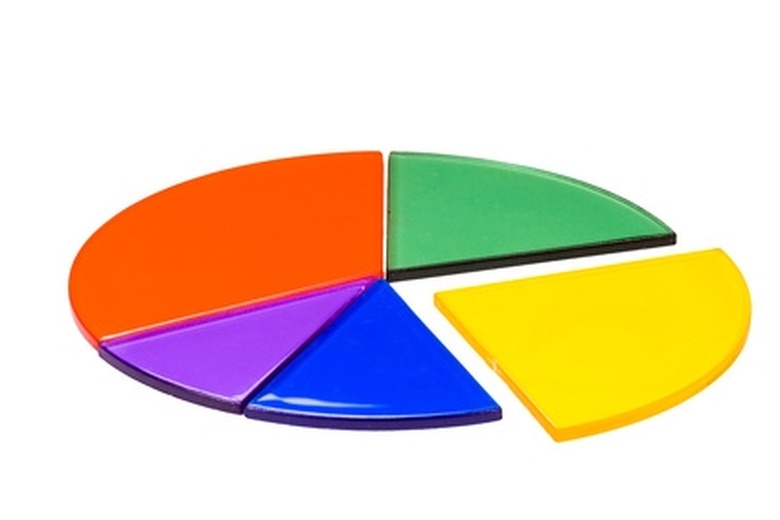How To Multiply Fractional Exponents
Fractional exponents yield roots of a number or expression. For instance, 100^1/2 means the square root of 100, or what number multiplied by itself equals 100 (the answer is 10; 10 X 10 = 100). And 125^1/3 means the cubed root of 125, or what number multiplied by itself three times is 125 (the answer is 5; 5 X 5 X 5 = 125). Similarly, 125^2/3 is the cubed root of 125 (5) raised to the second power (25). The exponent is usually shown as a small superscript, the number to the upper right of the base number and the ^ symbol. In the last example above, 125 is the base and 2/3 is the exponent. The beauty of algebra, and of mathematics in general, is that everything is logical, orderly and consistent. Once you know how to multiply whole-number exponents, multiplying fractional exponents is a snap. You just combine the rules for multiplying exponents with the rules for dealing with fractions. Simple, right? Here's how to multiply fractional exponents.
Step 1
Determine that the bases in your problem are the same. For instance, in 4^2/3 X 4^1/3, the base of both terms is 4. Be sure the denominators of your fractional exponents are not zero.
Step 2
Apply the rule for multiplying integers [y^a * y^c = y^a+c ] to the problem with fractional exponents. So, y^a/b * y^c/d = y^a/b + ^c/d.
Step 3
Solve for the sum of the fractions; a/b + c/d. If the denominators are the same (b=d), then the sum is quite easy. Just add the numerators (top numbers of the fractions): a+c/b. In the example above, 4^2/3 * 4^1/3 = 4^2/3 + ^1/3 = 4^1.
Step 4
Determine if the denominators of your fractional exponents differ. If so, you will have some extra steps before you can add the numerators of the exponents. You will have toL
A. Find the least common multiple of the denominators. List the multiples of each denominator and find the smallest number that is common to every list. For instance, in the problem z2/3 * z1/6 * z5/8 , the denominators of the fractional exponents are 3, 6 and 8. Their multiples are:
3–3, 6, 9, 12, 15, 18, 21, 24, 27
6–6, 12, 18, 24, 30
8–8, 16, 24, 32
The smallest number common to each list of multiples is 24; that is the least common denominator.
B. Convert each fractional exponent into an equivalent fraction with the least common denominator as its denominator. So, 2/3 = ?/24; 1/6 = ?/24 and 5/8 = ?/24. You should remember this from working with fractions. To find an equivalent fraction, you multiply the numerator and the denominator by the same number. In our example, 3 was multiplied by 8 to get 24, so you will multiply 2 (the numerator) by 8 also. The equivalency is 2/3 = 16/24. And similarly, 1/6 = 4/24 and 5/8 = 15/24.
C. Add the numerators. In our example 16 + 4 + 15 = 35. The fractional exponent is therefore 35/24.
TL;DR (Too Long; Didn't Read)
Practice finding fractional exponents without a calculator to make sure the concept is clear.
Cite This Article
MLA
O'Brien, Maria. "How To Multiply Fractional Exponents" sciencing.com, https://www.sciencing.com/multiply-fractional-exponents-4448796/. 24 April 2017.
APA
O'Brien, Maria. (2017, April 24). How To Multiply Fractional Exponents. sciencing.com. Retrieved from https://www.sciencing.com/multiply-fractional-exponents-4448796/
Chicago
O'Brien, Maria. How To Multiply Fractional Exponents last modified March 24, 2022. https://www.sciencing.com/multiply-fractional-exponents-4448796/
